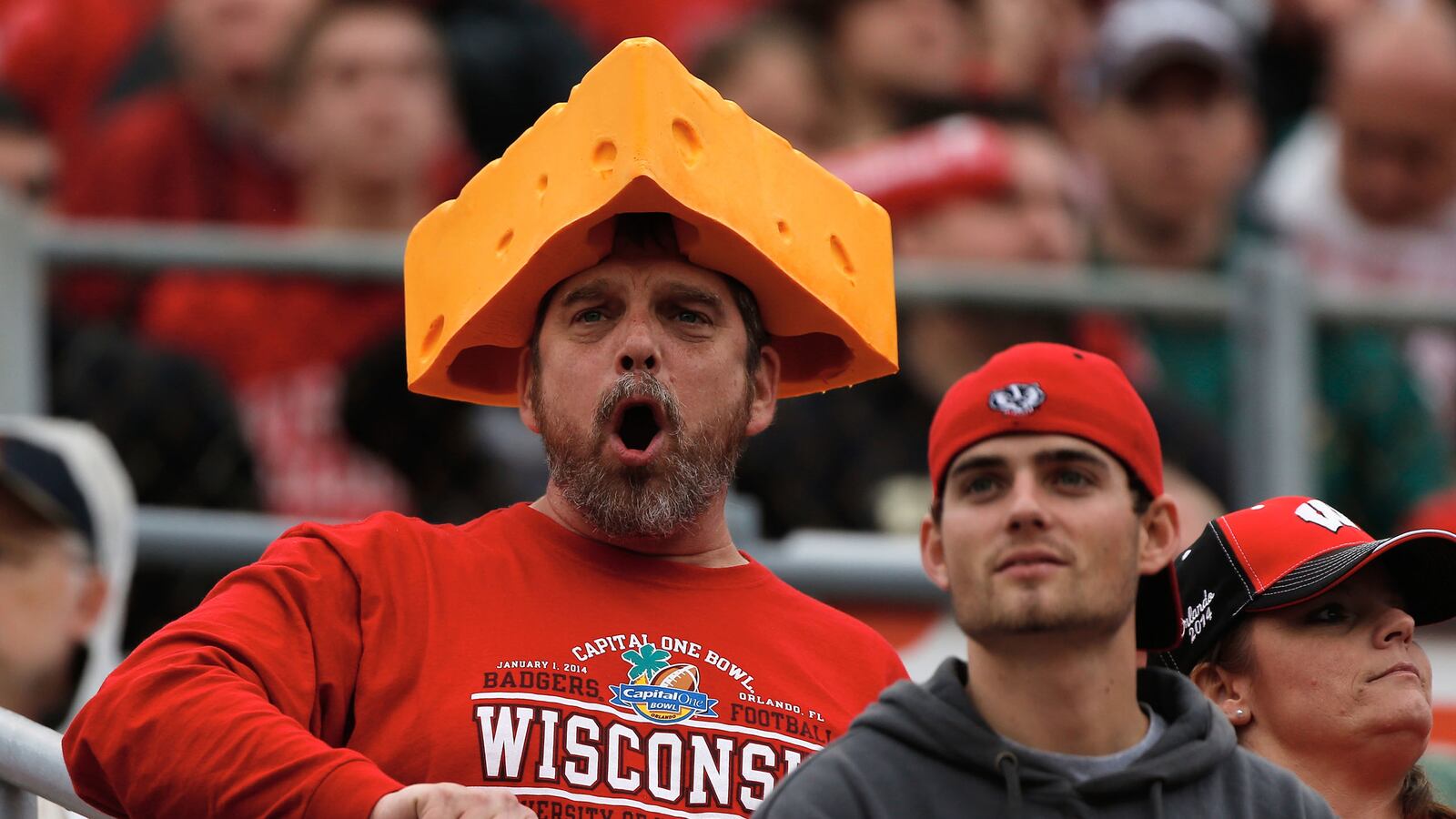Across the country, from Ann Arbor to Gainesville and from Chapel Hill to Tucson, student football attendance is down at big colleges, with empty seats dotting the massive stadiums. But in Madison, Wisconsin, students still come out in droves for seven Saturdays each year—and it’s a big deal.
Student tickets may not make a difference to the athletic budget’s massive bottom line. However, the significance of a packed student section goes beyond avoiding the embarrassment of seeing empty seats on national television. If schools across the country don’t start seriously addressing this issue, that 20-year-old who chooses to stay at home will also stay home at 30, 40, and 50—and fail to donate to or care about alumni activities.
Just before the start of the season, The Wall Street Journal ran a feature on declining student attendance at games. The data from 80 schools shows student attendance is down 7.1 percent since 2009. Of the 14 schools in the Big Ten whose data was collected, only five gave five years worth of data: Indiana, Purdue, Michigan State, Ohio State and Wisconsin. All but one had a decline in student attendance: Wisconsin.
Despite the ready availability of tickets at University of Michigan's “The Big House”—the largest college football stadium with the capacity to hold 109,901 Wolverine fans—sales have dropped precipitously in their student section. In 2013, the Michigan student section had about 19,000. This season, that number is somewhere between 13,000 and 14,000. In response to declining student attendance, athletic director Dave Brandon announced a decrease in student season ticket prices by 37.5 percent for next year.
It’s a very different picture when it comes to Badger fans. On June 16 at the painfully early (for college students on summer break) local time of 7:30 a.m., tens of thousands of Wisconsin students entered a virtual waiting room for their chance to get a season ticket package. Many got them, some didn’t—yours truly included. When all was said and done, by the time the clock struck 8:30 a.m., the 12,300 tickets allotted to undergraduates were gone
So, how has Madison been impervious to this nationwide trend of shrinking student sections? It’s hard to pin down but two factors may be at play here.
The first is consistently good teams. Since the beginning of the decade, the Badgers have reached the Rose Bowl three times and have perennially been in the Top-25. They’ve made a bowl game every year since 2002 and have only twice missed a bowl game since I was born in 1994. Success on the field certainly has been a contributing factor to students remaining excited about attending games.
But a winning record is too simplistic for explaining Wisconsin’s recipe for wining students.
The second thing may be less easy to quantify but may actually play a larger role in drawing students to Camp Randall—and in raising Wisconsin’s national academic standing: the game day atmosphere.
Saturday in Madison isn’t just about the game. The streets are packed with tailgaters that include not only current undergrads, but devoted alumni. When House of Pain’s “Jump Around” comes on at the end of the third quarter, it is an experience no couch or HDTV can capture. There’s a reason it won Sirius XM’s contest for best college sports tradition.
The spirit of the scene is all the more striking, considering a packed Camp Randall wasn’t always a given. When Tim Knoeck, a co-captain of the 1989 team, was asked about the party scene surrounding a game, he told the Chicago Tribune, “People on campus and in Madison don’t party that way anymore,” said Knoeck. “There’s less interest in football. The stadium’s not full anymore.”
Starting with the hire of then-head coach, now athletic director Barry Alvarez, the team quickly rose to national prominence, and the fans returned to the stadium en masse.
Just as importantly, with a student section packed to the gills, it became easier to put a consistently good team on the field because getting recruits to play for the Badgers was no longer a tough sell. This year's starting safety Lubern Figaro said what stood out the most when he took his official visit to campus was the amount of fans: “I had never seen so many people in my life and how the team treated each other like it was a big family.” A winning team may pack the stadium, but you need that packed stadium to get top recruits and sustain victories.
These improvements on the field don't just mean more students feel connected to their university, but better students want to go there. With football success, not only are schools seeing more applicants, but applicants with higher GPA’s and test scores.
In their Journal of Sports Economic paper “Understanding College Application Decisions: Why College Sports Success Matters,” Professors Devin G. Pope of the University of Chicago and Jaren C. Pope of Brigham Young University came to the conclusion that, “a school that has a stellar year in basketball or football on average receives up to 10 percent more SAT scores.”
Wisconsin is proof of the Popes' theory. The university may annually crack The Princeton Review’s top party school rankings since 1989 (clocking in at No. 8 this year). Still, the school has gotten more difficult to get into and the caliber of student attending has improved, as a result. In fact, the class of 2015, which was admitted on the heels of their first Rose Bowl appearance since 2000, had its lowest acceptance rate since 1989, the farthest back school data went.
Getting students to games clearly has ramifications beyond the walls of the stadium. The question is whether universities will learn their lesson.






